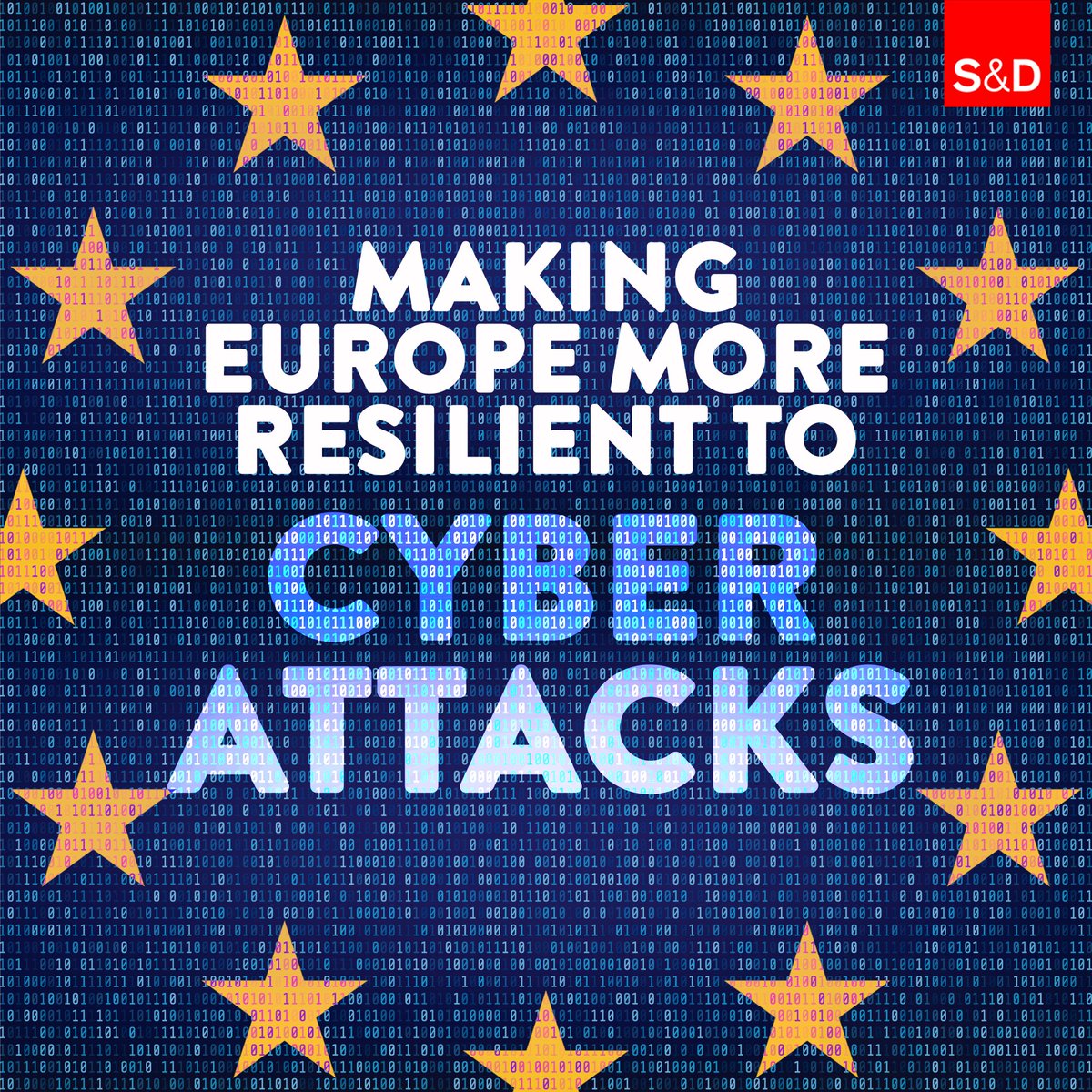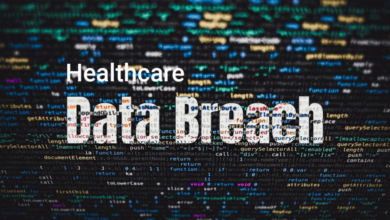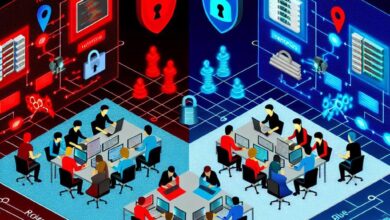
EU 5G Mobile Networks Vulnerable to Cyber Attacks
EU 5G mobile networks are vulnerable to cyber attacks – that’s a chilling reality. We’re talking about the backbone of our digital lives, the very infrastructure that powers everything from online banking to emergency services, potentially facing serious threats. This isn’t just about theoretical risks; sophisticated attacks are happening, exploiting weaknesses in software, hardware, and even the protocols themselves.
The potential consequences are enormous, ranging from widespread service disruptions to major data breaches impacting millions. Let’s dive into the details and explore what’s at stake.
This post will unpack the vulnerabilities in EU 5G networks, examining common attack vectors, the techniques used by malicious actors, and the devastating impact of successful breaches. We’ll also look at crucial mitigation strategies, the role of international cooperation, and the regulatory landscape shaping the fight against these threats. It’s a complex issue, but understanding it is vital for protecting ourselves in this increasingly interconnected world.
Vulnerability Vectors in EU 5G Networks
The rollout of 5G networks across the European Union presents significant opportunities for economic growth and technological advancement. However, this expansion also introduces new cybersecurity challenges. The inherent complexity of 5G infrastructure, coupled with its increasing reliance on software and interconnected devices, creates numerous potential entry points for malicious actors. Understanding these vulnerabilities is crucial for implementing effective mitigation strategies and ensuring the security and resilience of EU 5G networks.
Common 5G Network Entry Points for Cyberattacks
The following table summarizes common vulnerability types in EU 5G networks, their potential impact, and suggested mitigation strategies. It’s important to note that the specific vulnerabilities and their severity can vary depending on the network architecture, vendor equipment, and implementation practices.
| Vulnerability Type | Description | Impact | Mitigation Strategy |
|---|---|---|---|
| Software Vulnerabilities | Weaknesses in the software running on network elements (e.g., base stations, core network functions) can be exploited by attackers to gain unauthorized access or disrupt services. This includes vulnerabilities in operating systems, network protocols, and applications. | Data breaches, service disruptions, denial-of-service attacks, unauthorized access to network resources. | Regular software updates and patching, rigorous security testing, implementation of secure coding practices, vulnerability scanning and penetration testing. |
| Hardware Vulnerabilities | Weaknesses in hardware components, such as baseband processors or network interface cards, can be exploited to compromise network security. This can include backdoors, hardware Trojans, or physical tampering. | Data breaches, service disruptions, unauthorized access, manipulation of network traffic, introduction of malicious code. | Secure supply chain management, hardware verification and validation, physical security measures to protect network equipment, use of trusted hardware components. |
| Network Protocol Vulnerabilities | Exploitable weaknesses in the communication protocols used within the 5G network (e.g., 5G NR, GTP, Diameter) can allow attackers to intercept or manipulate network traffic. | Eavesdropping, data manipulation, denial-of-service attacks, unauthorized access. | Secure configuration of network protocols, implementation of encryption and authentication mechanisms, regular security audits and penetration testing. |
| Human Error | Human error, such as misconfigurations, weak passwords, or lack of awareness of security best practices, can create significant vulnerabilities. | Data breaches, service disruptions, unauthorized access, increased susceptibility to other attacks. | Security awareness training for network personnel, robust access control mechanisms, multi-factor authentication, regular security audits and penetration testing. |
The Role of Software Vulnerabilities in 5G Network Attacks
Software vulnerabilities represent a major threat to 5G network security. Exploiting these flaws can allow attackers to gain control over network elements, leading to various security incidents. For example, a vulnerability in the software controlling a base station could allow an attacker to disrupt service to a large number of users, causing a denial-of-service attack. Another example is a vulnerability in a core network function that manages user authentication, which could allow an attacker to impersonate legitimate users and gain unauthorized access to sensitive data.
The Heartbleed vulnerability, affecting OpenSSL, serves as a potent reminder of the devastating consequences of unpatched software. While not directly targeting 5G, it illustrates the potential for a single software flaw to have widespread impact across diverse systems.
Threats Posed by Compromised Hardware Components
Compromised hardware components pose a significant and insidious threat to 5G network security. Malicious actors could introduce hardware Trojans – malicious code embedded within hardware during manufacturing – to gain persistent access to the network. This could involve manipulating network traffic, stealing data, or launching denial-of-service attacks. Furthermore, physical tampering with hardware components, such as base stations or core network equipment, could allow attackers to install unauthorized hardware or modify existing components, leading to similar devastating consequences.
The potential for long-term, undetected compromise makes hardware vulnerabilities particularly dangerous. The impact on network security and data integrity could be catastrophic, requiring extensive remediation efforts and potentially causing significant financial and reputational damage.
Attack Methods and Techniques
The vulnerability of EU 5G networks to cyberattacks is a serious concern, demanding a thorough understanding of the sophisticated methods employed by malicious actors. These attacks leverage various weaknesses in the network infrastructure and protocols, resulting in significant disruptions and data breaches. This section will delve into specific attack methods, focusing on denial-of-service attacks and the exploitation of protocol vulnerabilities.
Attackers utilize a range of techniques to compromise 5G networks. These range from relatively simple methods like exploiting known vulnerabilities in network devices to highly sophisticated attacks involving the manipulation of signaling protocols and the deployment of botnets to overwhelm network resources. The impact of successful attacks can be far-reaching, impacting everything from individual user experience to critical national infrastructure.
Sophisticated Attack Methods Against EU 5G Networks
Several sophisticated attack methods have been observed targeting EU 5G networks. One example is the use of advanced persistent threats (APTs). These highly organized and well-resourced groups often employ a combination of techniques, including spear-phishing, zero-day exploits, and custom malware, to gain unauthorized access to network infrastructure. Once inside, they may steal sensitive data, install backdoors for future access, or conduct surveillance.
Another example involves the use of network-based attacks that target the signaling protocols used in 5G networks. By manipulating these protocols, attackers can disrupt communication, conduct man-in-the-middle attacks, or even launch denial-of-service attacks. The impact of these attacks can range from service outages to complete network disruption, potentially affecting millions of users.
Denial-of-Service Attacks Targeting EU 5G Infrastructure
Denial-of-service (DoS) attacks aim to disrupt the availability of network services by overwhelming them with traffic. Different types of DoS attacks target various components of the 5G infrastructure.
Understanding the nuances of various DoS attacks is crucial for effective mitigation strategies. Each attack type requires a specific defensive approach, highlighting the need for a multi-layered security architecture.
- Volume-based DoS attacks: These attacks flood the target with a massive volume of traffic, exceeding its capacity to handle legitimate requests. Examples include UDP floods and ICMP floods. These are relatively simple to launch but can be highly effective in overwhelming network resources.
- Protocol-based DoS attacks: These attacks exploit vulnerabilities in network protocols to disrupt services. For example, a SYN flood attack exploits the TCP three-way handshake to exhaust server resources. These attacks require more technical expertise to execute but can be particularly damaging.
- Application-layer DoS attacks: These attacks target specific applications running on the network. For instance, a HTTP flood attack sends a large number of requests to a web server, consuming its resources and making it unavailable. These attacks often require a deeper understanding of the targeted application’s vulnerabilities.
Exploitation of 5G Network Protocol Vulnerabilities
Attackers can exploit vulnerabilities in 5G network protocols like Diameter and GTP to gain unauthorized access or disrupt services. These protocols, essential for communication within the 5G network, often contain weaknesses that can be leveraged.
The complexity of 5G protocols and the vast amount of data exchanged presents numerous opportunities for attackers. Careful analysis and proactive security measures are critical to prevent exploitation.
For example, vulnerabilities in the Diameter signaling protocol could allow an attacker to intercept or modify signaling messages, potentially leading to unauthorized access to network resources or disruption of services. Similarly, weaknesses in the GTP protocol, used for user plane communication, could enable attackers to eavesdrop on user data or inject malicious traffic. Specific examples of such vulnerabilities are frequently reported in security advisories and research papers, highlighting the ongoing need for security updates and patches.
Impact and Consequences of Cyberattacks

The vulnerability of EU 5G networks to cyberattacks presents a significant threat with far-reaching consequences. A successful attack can disrupt essential services, cause substantial economic losses, and even compromise national security. The interconnected nature of 5G systems means that a single breach can trigger cascading failures, impacting a wide range of sectors and individuals. Understanding the potential impact is crucial for developing effective mitigation strategies.The consequences extend beyond simple service interruptions.
The sheer volume of data handled by 5G networks, coupled with the increasing reliance on these networks for critical infrastructure, amplifies the potential damage. Attacks targeting control systems of power grids, transportation networks, or financial institutions could have devastating real-world effects. The economic repercussions could be immense, encompassing direct losses from damage, theft, and ransom demands, as well as indirect costs related to business disruption, reputational damage, and regulatory fines.
Impact of Data Breaches on Individuals and Organizations
Data breaches resulting from cyberattacks on EU 5G networks pose significant risks to both individuals and organizations. The type of data compromised directly influences the severity of the impact. Consider the following table outlining potential impacts and mitigation strategies:
| Data Type | Impact on Individuals | Impact on Organizations | Mitigation |
|---|---|---|---|
Personal Identifiable Information (PII)
|
Identity theft, fraud, financial losses, reputational damage, emotional distress. | Legal liabilities, reputational damage, loss of customer trust, financial losses from fines and remediation. | Strong data encryption, robust access controls, multi-factor authentication, employee training on data security, incident response plans. |
| Financial Data – Bank account details, credit card information | Financial losses, fraud, difficulty accessing financial services. | Financial losses, legal liabilities, reputational damage, loss of customer trust. | Secure payment gateways, encryption of financial data both in transit and at rest, regular security audits, compliance with relevant regulations (e.g., GDPR). |
| Health Data – Medical records, genetic information | Compromised health care, discrimination, potential for blackmail. | Legal liabilities, reputational damage, loss of customer trust, potential for healthcare system disruption. | Strict access controls, robust encryption, compliance with HIPAA or equivalent regulations, regular security audits. |
| Intellectual Property – Trade secrets, research data | Limited direct impact, but potential indirect impact through compromised services. | Loss of competitive advantage, financial losses, reputational damage, potential for legal action. | Secure data storage, access controls, regular security audits, robust intellectual property protection measures. |
Cascading Failures in Interconnected 5G Systems, Eu 5g mobile networks are vulnerable to cyber attacks
The interconnected nature of 5G systems creates a significant risk of cascading failures. A successful cyberattack on a single component, such as a base station or a core network element, could trigger a chain reaction, leading to widespread service disruptions.
For instance, a denial-of-service attack targeting a critical network node could cripple communication services across a large geographical area. Similarly, a compromise of a software component used in multiple network elements could allow attackers to spread their malicious activities rapidly. The impact could extend beyond the immediate target, affecting other interconnected systems and potentially leading to significant societal disruption.
The 2010 Stuxnet attack, though not targeting 5G, provides a compelling example of how a sophisticated cyberattack can cause cascading failures in critical infrastructure. While Stuxnet targeted industrial control systems, the principle of a single point of failure leading to widespread disruption remains highly relevant to the interconnected nature of 5G.
Seriously worrying news about EU 5G networks facing major cyber vulnerabilities has me thinking about robust security solutions. Building secure apps is crucial, and that’s where learning more about domino app dev, the low-code and pro-code future , comes in. Understanding how to develop secure applications is paramount, especially given the increasing threats to our critical infrastructure like 5G networks.
We need to up our game to protect against these attacks.
Mitigation Strategies and Security Measures

Strengthening the security posture of EU 5G networks requires a multi-faceted approach encompassing proactive and reactive measures. This involves implementing robust security architectures, leveraging advanced technologies, and fostering international collaboration. Ignoring these aspects leaves the network vulnerable to a range of sophisticated cyberattacks with potentially devastating consequences.
Proactive Security Measures for EU 5G Networks
A proactive strategy focuses on preventing attacks before they occur. This involves implementing robust security controls at every layer of the network architecture. This preventative approach is far more cost-effective than reacting to breaches.
- Network Segmentation: Dividing the network into smaller, isolated segments limits the impact of a successful attack. If one segment is compromised, the attacker’s access to other parts of the network is restricted.
- Zero Trust Security Model: This approach assumes no implicit trust and verifies every access request, regardless of its origin. Multi-factor authentication and continuous monitoring are crucial components.
- Regular Security Audits and Penetration Testing: Regular assessments identify vulnerabilities before attackers can exploit them. Penetration testing simulates real-world attacks to expose weaknesses in the network’s defenses.
- Software Updates and Patch Management: Promptly applying security patches and updates to all network devices and software is crucial for mitigating known vulnerabilities. Automated patching systems can significantly improve efficiency.
- Secure Supply Chain Management: Ensuring the security of the hardware and software components used in the 5G network is paramount. This involves vetting vendors and rigorously inspecting components for vulnerabilities.
Reactive Security Measures for EU 5G Networks
While prevention is key, a robust reactive strategy is also necessary to minimize the impact of successful attacks. This involves effective incident response planning and advanced threat detection capabilities.
- Intrusion Detection and Prevention Systems (IDPS): These systems monitor network traffic for malicious activity and can automatically block or mitigate threats. Advanced machine learning techniques can enhance their effectiveness.
- Security Information and Event Management (SIEM): SIEM systems collect and analyze security logs from various sources to provide a comprehensive view of the network’s security posture. This allows for faster identification and response to security incidents.
- Incident Response Plan: A well-defined incident response plan Artikels the steps to be taken in the event of a security breach. This includes procedures for containment, eradication, recovery, and post-incident analysis.
- Threat Intelligence Sharing: Sharing threat intelligence with other network operators and cybersecurity organizations helps to identify and mitigate emerging threats more effectively. This collaborative approach enhances the overall security of the ecosystem.
Comprehensive Security Architecture for EU 5G Networks
A comprehensive security architecture should incorporate various security technologies and best practices to create a layered defense against cyberattacks. This layered approach ensures that even if one layer is compromised, others remain in place to protect the network.
A robust security architecture requires a holistic approach, considering all aspects of the network from the physical infrastructure to the applications running on it.
The news about EU 5G mobile networks being vulnerable to cyber attacks is seriously worrying. It highlights the urgent need for robust security measures, and that’s where solutions like cloud security posture management come in. Learning more about bitglass and the rise of cloud security posture management is crucial for understanding how we can better protect these vital networks.
Ultimately, stronger security is the only way to mitigate the risks facing our increasingly connected world and prevent future 5G breaches.
This architecture should include elements such as encryption at all layers, access control mechanisms, and robust authentication protocols. The use of AI and machine learning for threat detection and response is also crucial. Regular security assessments and updates are essential to maintain the effectiveness of this architecture.
International Cooperation in Enhancing EU 5G Cybersecurity
International collaboration is vital for strengthening the cybersecurity of EU 5G networks. Sharing threat intelligence, best practices, and resources across borders enhances the collective security posture.
- Information Sharing Platforms: Establishing secure platforms for sharing threat intelligence between EU member states and international partners facilitates faster response to emerging threats.
- Joint Cybersecurity Exercises and Training: Regular cybersecurity exercises help to identify vulnerabilities and improve incident response capabilities. Joint training programs enhance the skills and expertise of cybersecurity professionals across different countries.
- Harmonization of Cybersecurity Standards and Regulations: Developing common cybersecurity standards and regulations across different countries ensures interoperability and reduces fragmentation in the security landscape.
- Multilateral Agreements and Partnerships: Formal agreements and partnerships between governments and organizations foster collaboration and facilitate the sharing of resources and expertise.
Regulatory and Policy Implications: Eu 5g Mobile Networks Are Vulnerable To Cyber Attacks

The cybersecurity of 5G networks is not merely a technological challenge; it’s a significant policy and regulatory concern. The EU, recognizing the potential for widespread disruption and damage from cyberattacks targeting these critical infrastructure networks, has implemented and is continuously developing a framework of regulations and policies aimed at bolstering 5G security. The effectiveness of these measures, however, hinges on their adaptability to the rapidly evolving threat landscape and the ability of member states to effectively implement and enforce them.The EU’s approach to 5G cybersecurity involves a multi-faceted strategy encompassing national security concerns, economic competitiveness, and the protection of citizens’ data.
This requires balancing the need for robust security measures with the potential for regulatory burdens to stifle innovation and market competition. Finding this equilibrium is a central challenge in the ongoing development of 5G cybersecurity policy. The sheer complexity of 5G networks, involving a vast array of interconnected devices and vendors, further complicates the task of establishing comprehensive and effective regulatory oversight.
EU Regulations and Policies Addressing 5G Cybersecurity Risks
The EU’s approach to 5G cybersecurity is primarily driven by the NIS2 Directive (Network and Information Systems Directive 2), which mandates a higher level of cybersecurity for essential services, including 5G networks. This directive focuses on risk management, incident reporting, and cooperation between member states. The EU also actively promotes the development and adoption of cybersecurity standards and best practices through initiatives like the ENISA (European Union Agency for Cybersecurity).
Furthermore, national governments play a significant role in implementing and enforcing these EU-wide regulations, often incorporating their own national-level cybersecurity strategies. This multifaceted approach aims to create a robust and harmonized cybersecurity landscape across the EU, addressing both the technological and geopolitical aspects of 5G security.
Challenges and Opportunities in Developing Effective Cybersecurity Regulations for 5G Networks
Developing effective cybersecurity regulations for 5G networks presents several key challenges. The rapid pace of technological advancements necessitates a dynamic and adaptive regulatory framework, capable of keeping up with emerging threats and vulnerabilities. Ensuring consistent implementation and enforcement across all 27 EU member states, each with its own unique regulatory environment and capabilities, is another significant hurdle. Balancing the need for robust security with the promotion of innovation and market competitiveness also requires careful consideration.
A overly stringent regulatory environment could stifle innovation, while insufficient regulation could leave networks vulnerable to attack. However, opportunities exist in fostering collaboration between public and private sectors, leveraging the expertise of both to develop and implement effective security measures. Furthermore, international cooperation is crucial in addressing the transnational nature of cyber threats affecting 5G networks.
Best Practices for Implementing Cybersecurity Regulations and Standards for 5G Networks
Effective implementation of cybersecurity regulations and standards requires a multi-pronged approach.
- Risk Assessment and Management: Regular and comprehensive risk assessments are crucial to identify vulnerabilities and prioritize security measures. This should incorporate threat modeling, vulnerability scanning, and penetration testing.
- Vendor Diversity and Supply Chain Security: Relying on a limited number of vendors increases the risk of widespread vulnerabilities. Promoting vendor diversity and implementing robust supply chain security measures are essential to mitigate this risk. This includes thorough vetting of vendors and their products.
- Security by Design and Development: Integrating security considerations throughout the entire lifecycle of 5G network development and deployment is paramount. This involves secure coding practices, regular security updates, and robust authentication and authorization mechanisms.
- Incident Response Planning and Capabilities: Having a well-defined incident response plan, including procedures for detection, containment, eradication, recovery, and post-incident activity, is crucial for minimizing the impact of cyberattacks.
- International Cooperation and Information Sharing: Cybersecurity threats often transcend national borders, requiring international cooperation and information sharing to effectively address them. This includes collaboration between governments, industry, and international organizations.
Last Point
The vulnerability of EU 5G networks to cyberattacks is a serious and evolving challenge. While the risks are significant, the good news is that proactive measures, robust security architectures, and international collaboration can significantly mitigate these threats. Understanding the vulnerabilities, the attack methods, and the potential consequences is the first step towards building a more resilient and secure 5G infrastructure.
Staying informed, advocating for strong security practices, and demanding accountability from network providers are crucial in ensuring the safety and reliability of our digital future. The fight for a secure 5G network is far from over, but by working together, we can make a difference.
Top FAQs
What are the most common types of data stolen in 5G network attacks?
Stolen data can include personal information (names, addresses, financial details), sensitive business data, and even government secrets, depending on the target.
How can individuals protect themselves from 5G network attacks?
Individuals can use strong passwords, enable two-factor authentication, keep their software updated, and be wary of phishing scams.
What role do insurance companies play in mitigating 5G cyber risks?
Insurers offer cyber liability insurance policies that can help organizations cover the costs associated with data breaches and other cyber incidents.
Are there any international organizations working on 5G network security?
Yes, organizations like the 3GPP and various governmental bodies collaborate on setting standards and best practices for 5G security.





